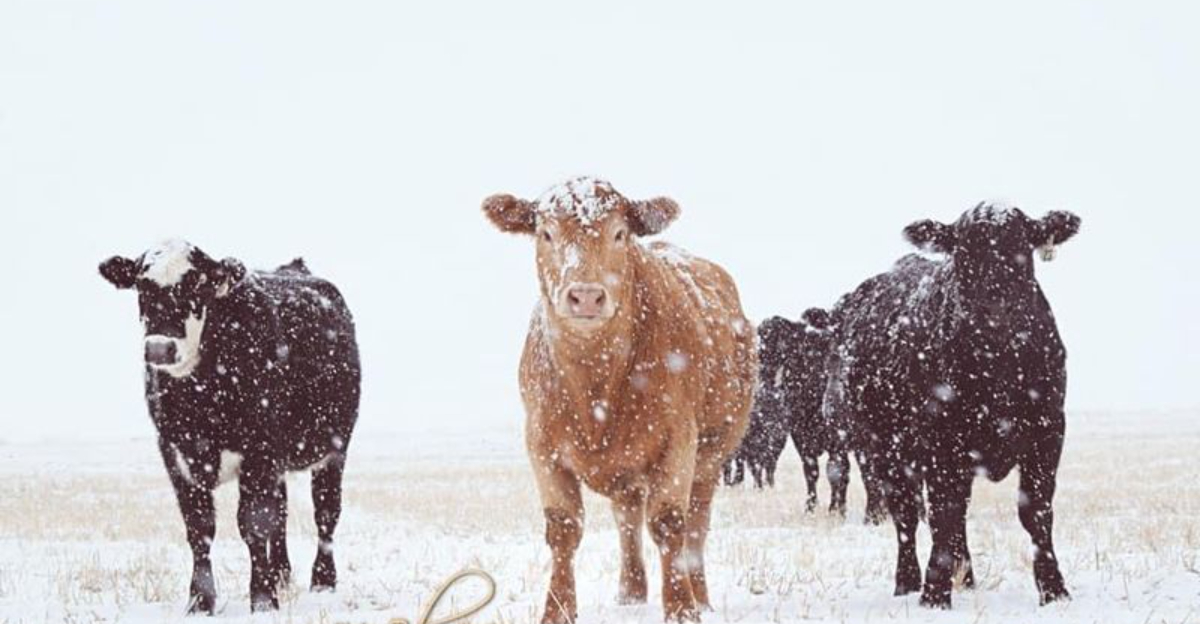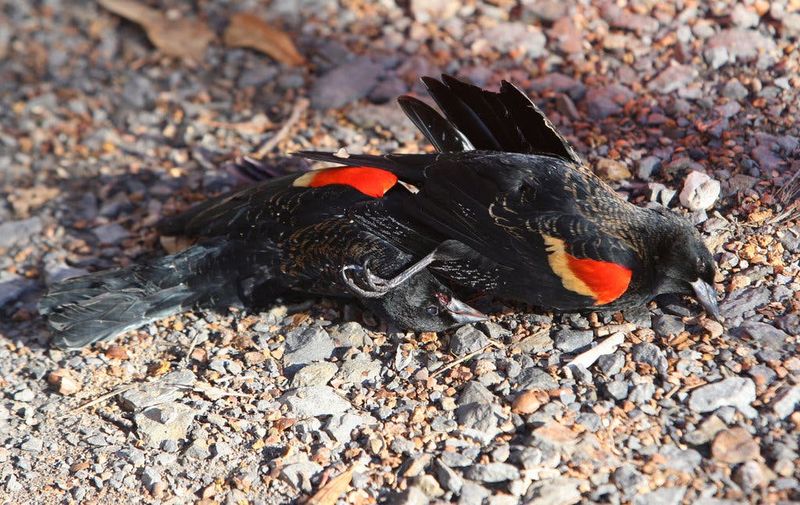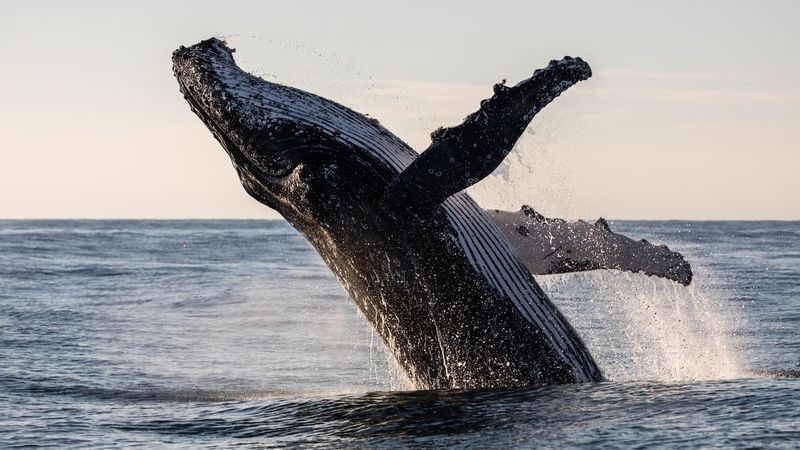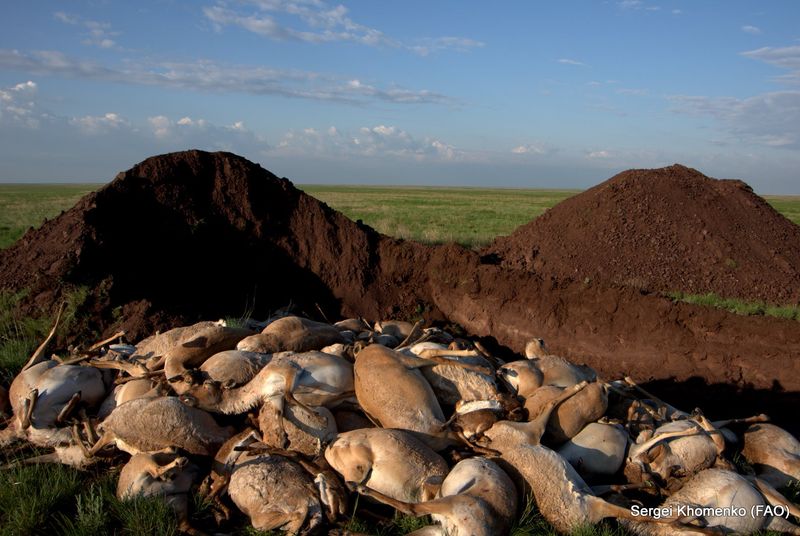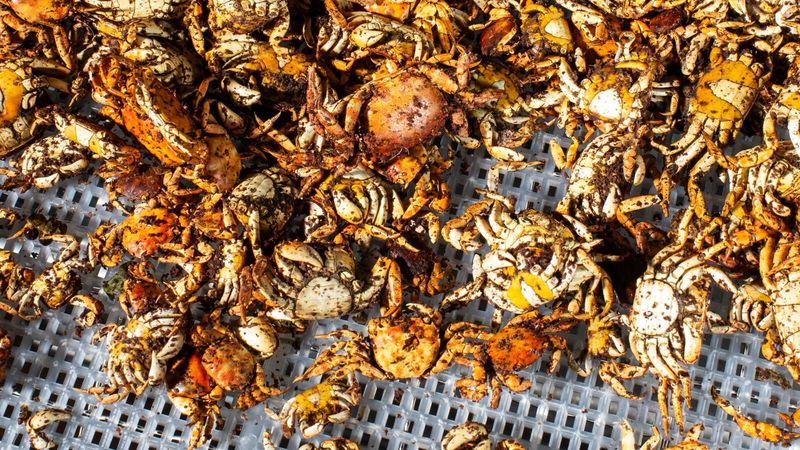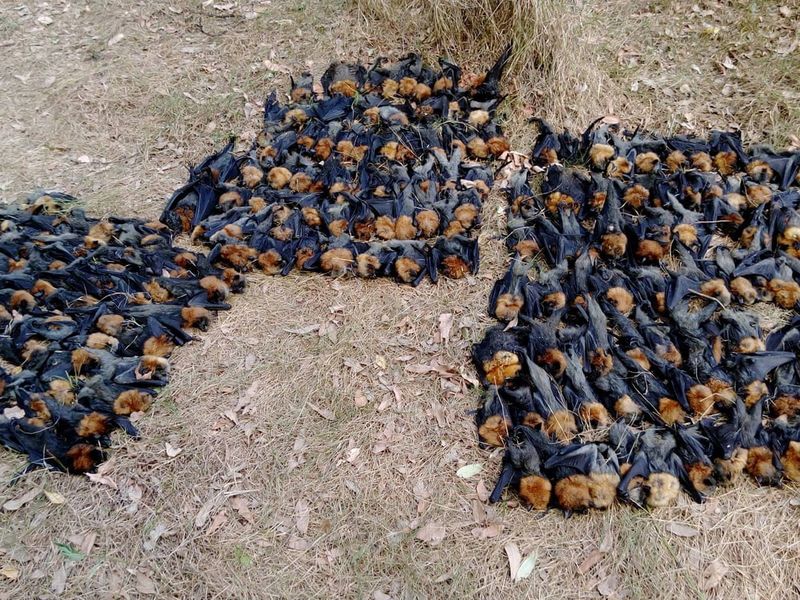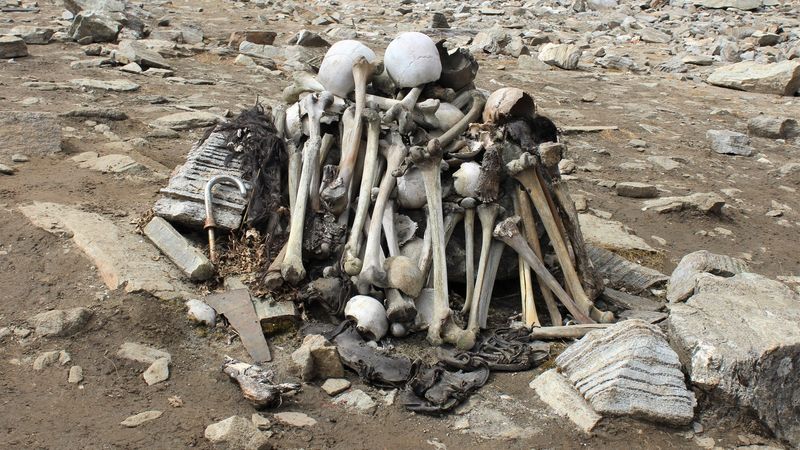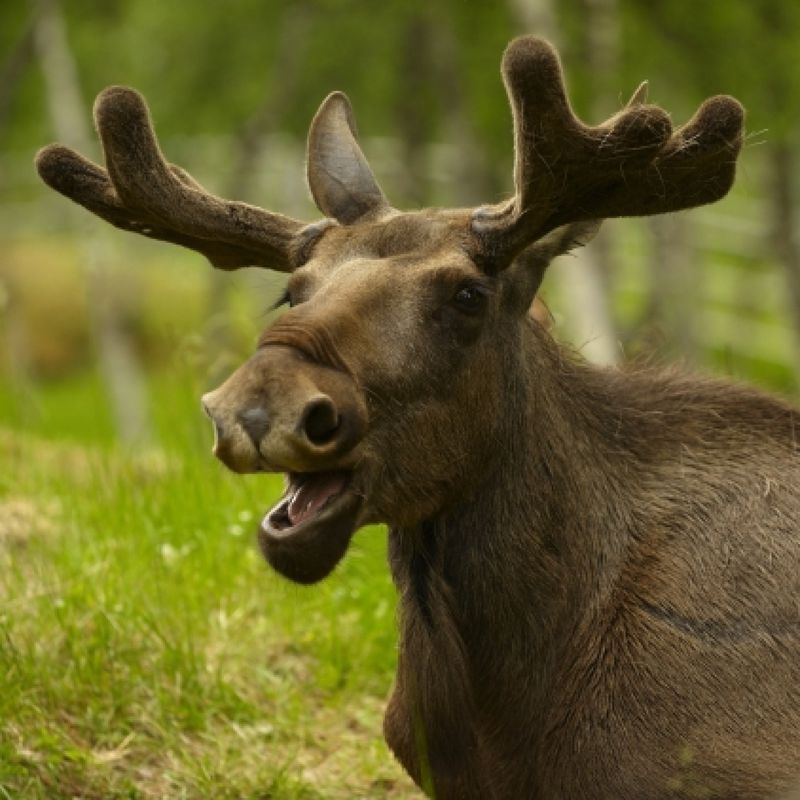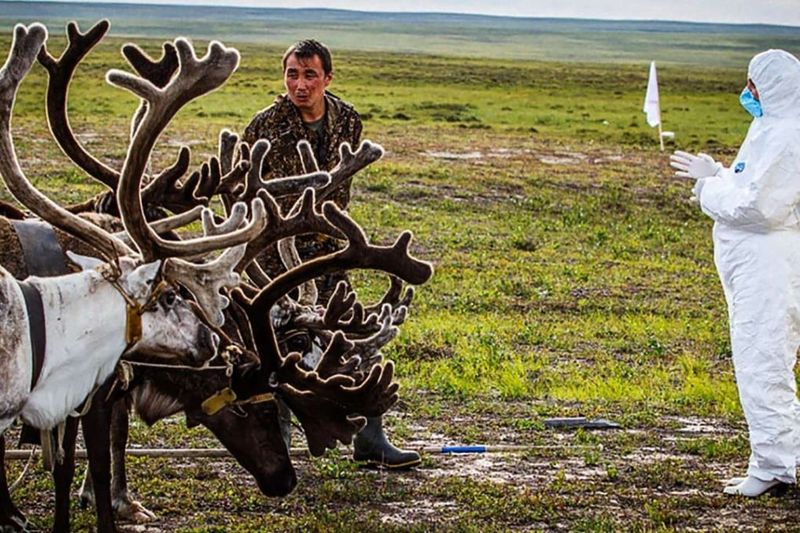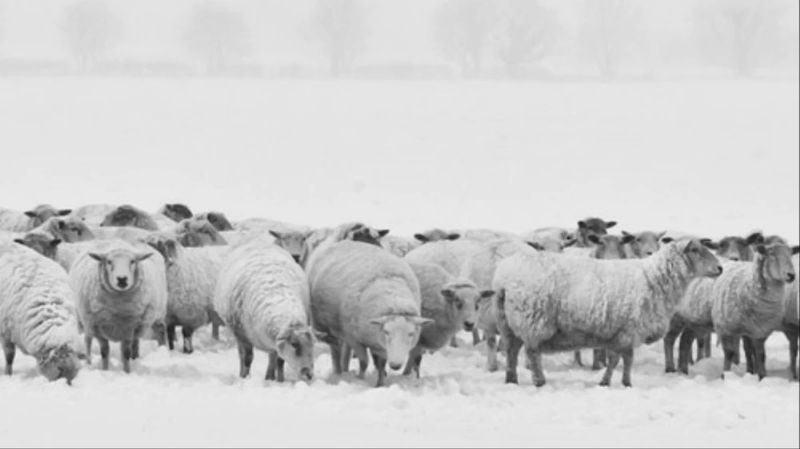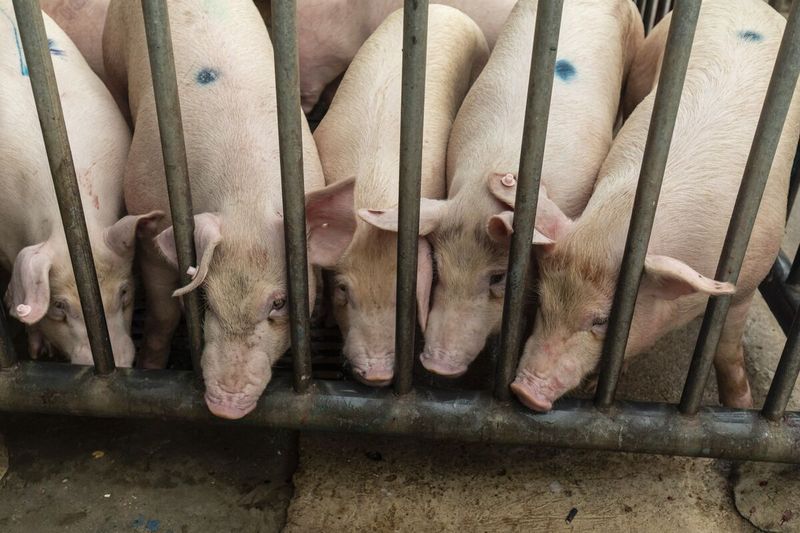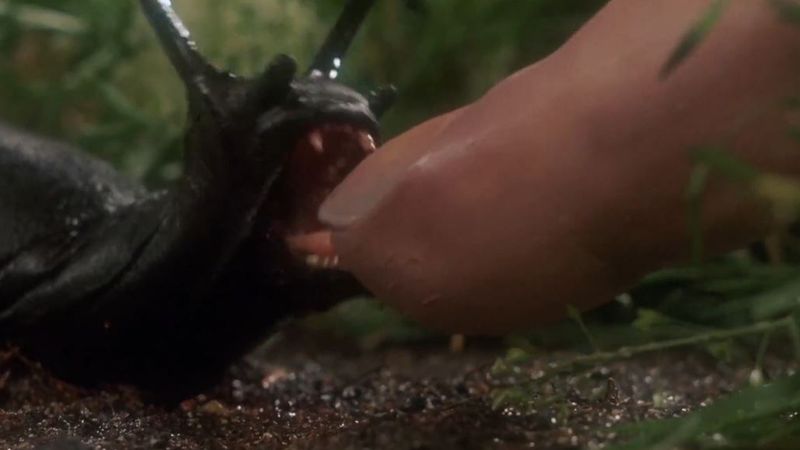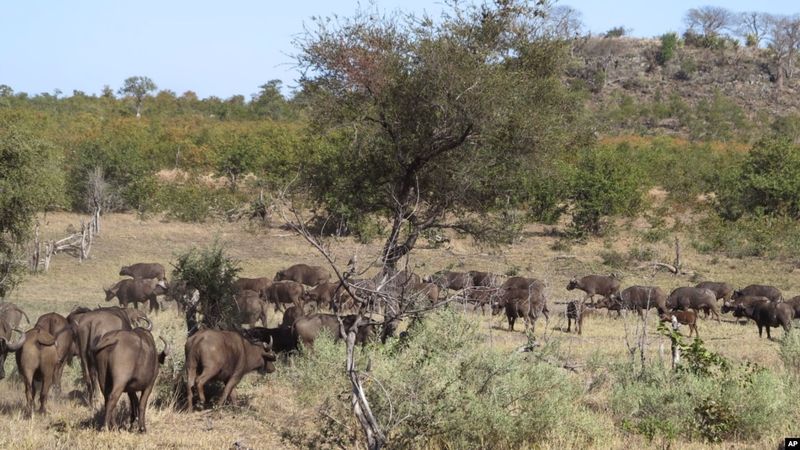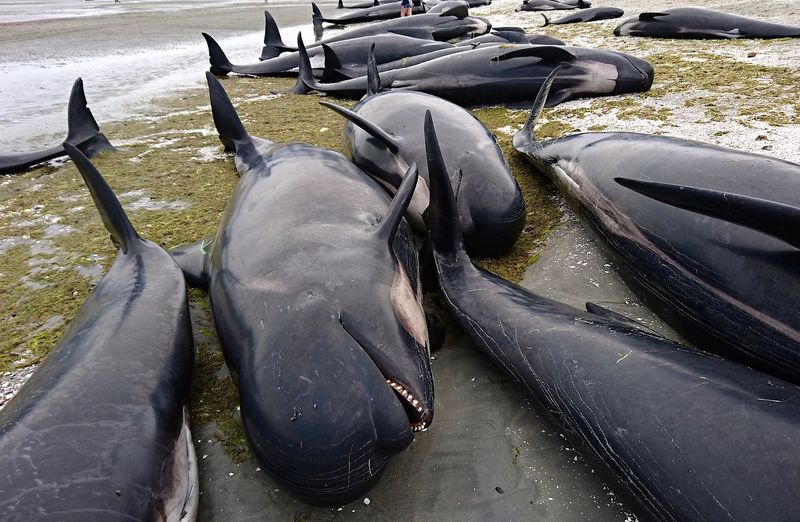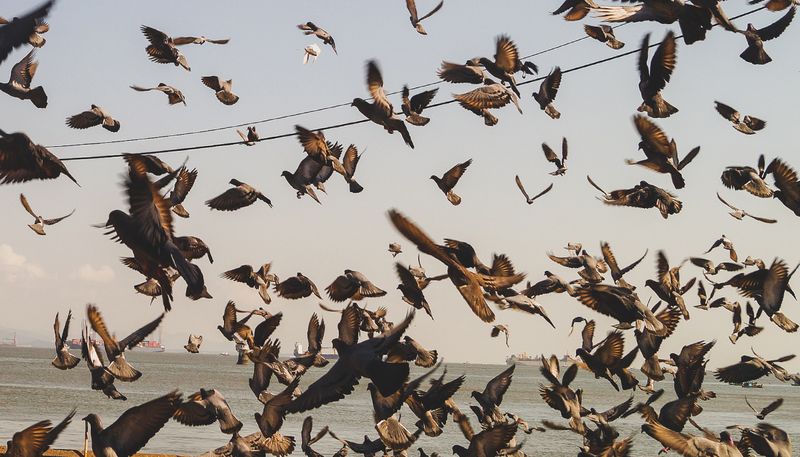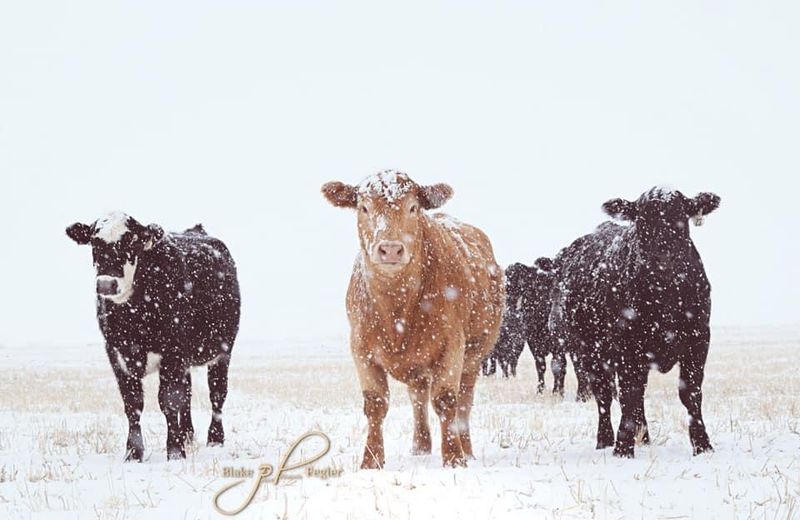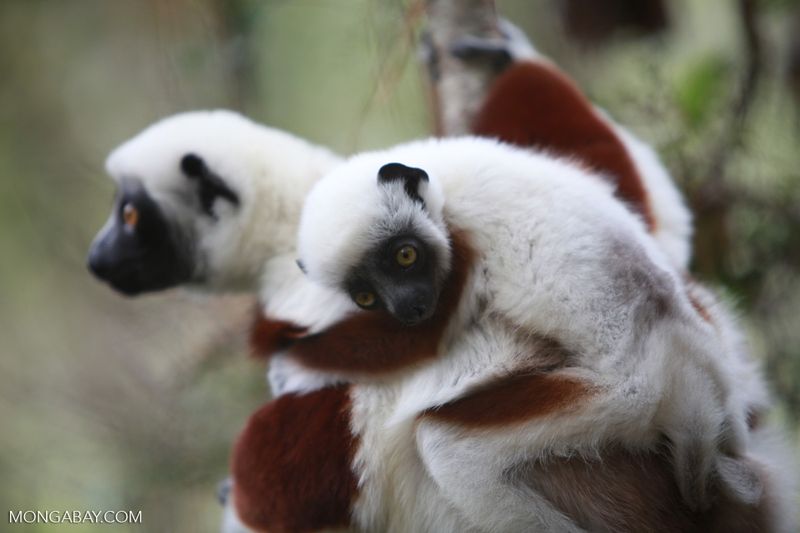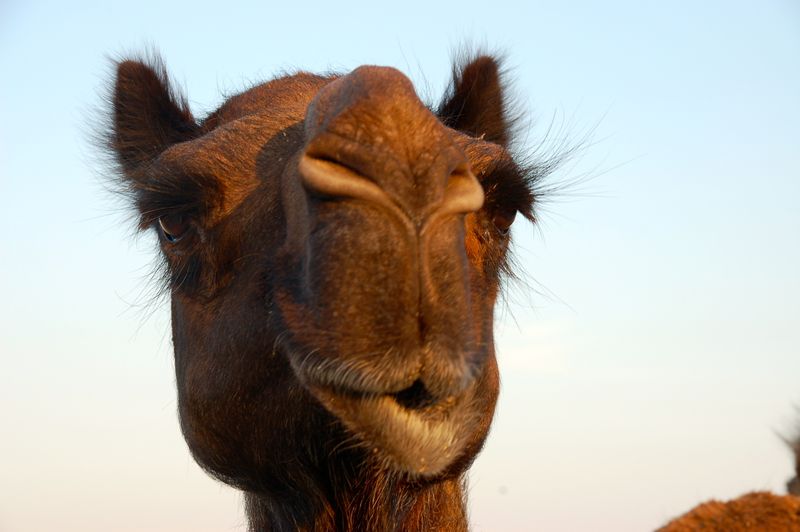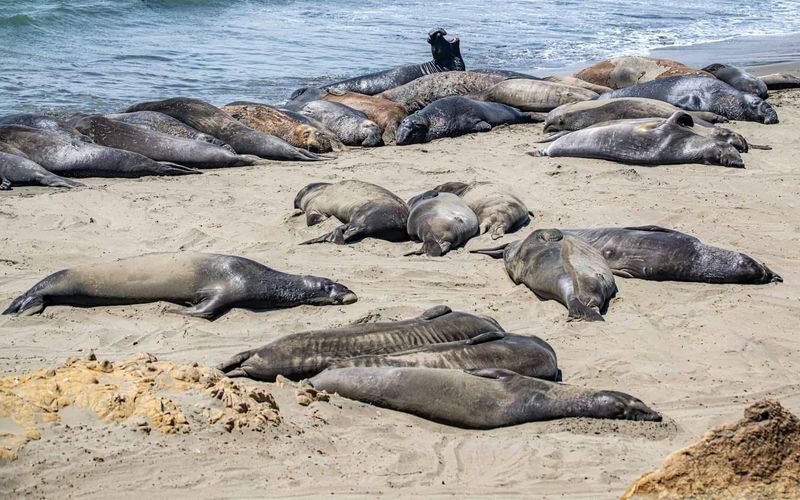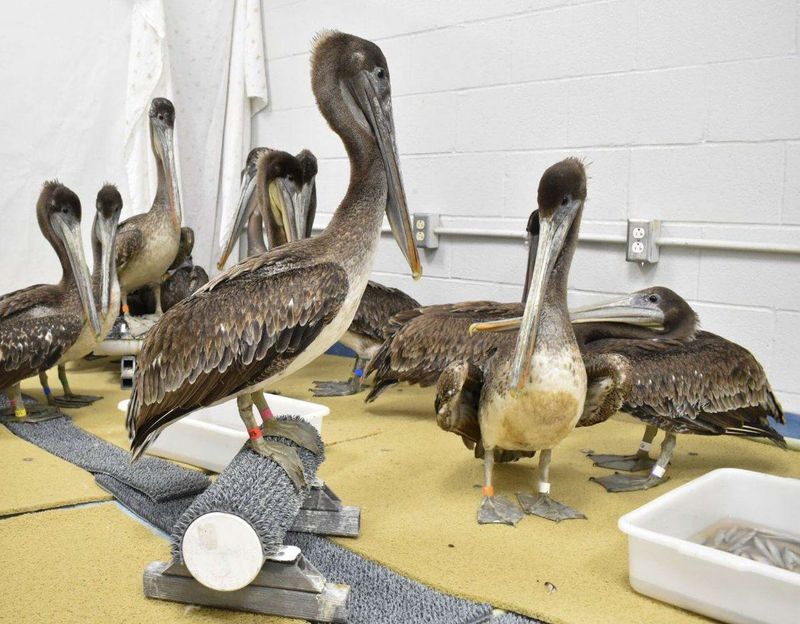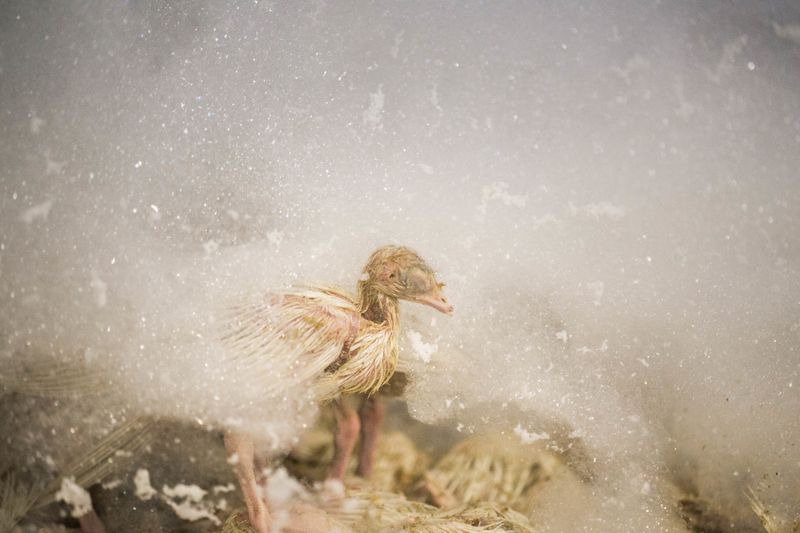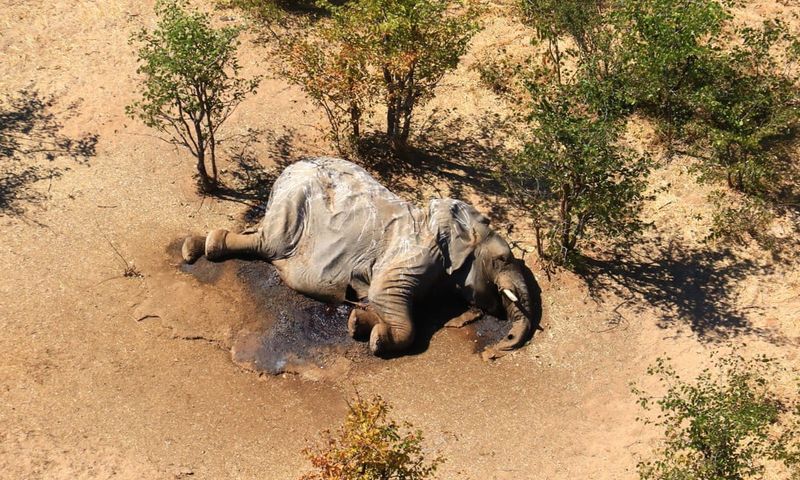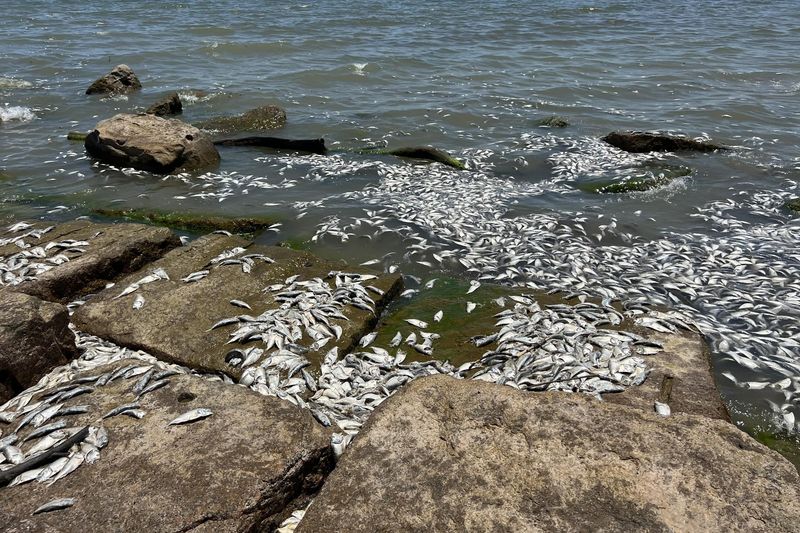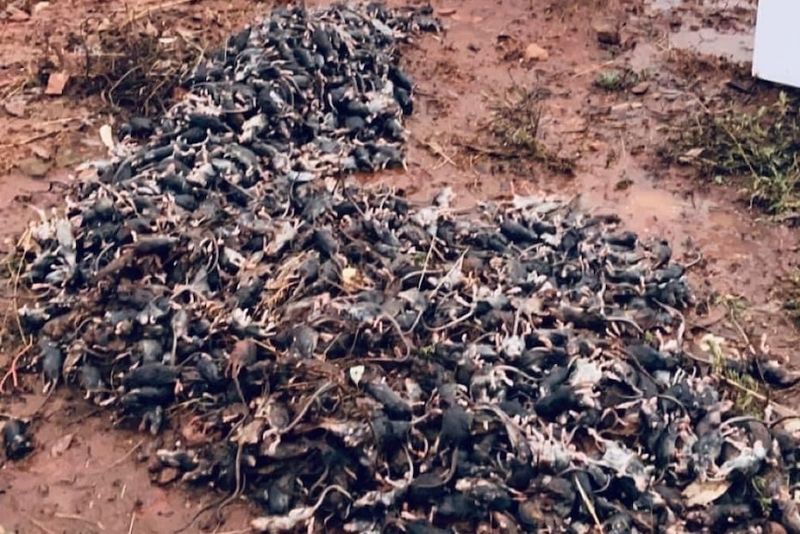Explore the unexplained and mysterious events of mass animal deaths throughout history. These events have puzzled scientists and left communities in shock. From birds falling out of the sky to whales washing ashore, each incident carries its own questions and theories. This blog post delves into 23 such mysterious occurrences, shedding light on potential causes and the impact on ecosystems.
1. The Arkansas Blackbird Die-Off (2011)
On a chilly New Year’s Eve in Beebe, Arkansas, thousands of red-winged blackbirds plummeted from the sky. A shocking spectacle, the birds fell onto streets and lawns, painting a grim picture. Initial panic turned to curiosity as experts scrambled to explain the phenomenon.
The leading theory suggests that loud fireworks spooked the birds, causing them to fly disoriented into buildings and each other. Despite the unsettling scene, similar events have occurred elsewhere, highlighting the fragile balance between wildlife and human festivities.
2. The Chilean Whale Graveyard (2011-2015)
In the remote expanses of Patagonia, a grim discovery unfolded as over 340 whale carcasses washed ashore. This event marked one of the largest mass whale deaths ever recorded, leaving scientists puzzled.
The suspected cause points to toxic algae blooms, notorious for poisoning marine life. These blooms disrupt the food chain, leading to tragic consequences for large marine mammals. The beaches, once vibrant, became a somber whale graveyard, raising questions about ocean health and the unseen impacts of environmental changes.
3. The Kazakhstan Saiga Antelope Extinction Event (2015)
The saiga antelope, with its distinct bulbous nose, faced a disastrous fate on Kazakhstan’s steppes. Within weeks, over 200,000 of these antelopes perished, wiping out nearly two-thirds of the global population.
Experts believe a bacterial infection, triggered by unusual weather patterns, is to blame. This catastrophic event highlights the vulnerability of species to sudden environmental shifts. The mass death of these unique creatures serves as a stark reminder of nature’s unpredictability and the fragility of biodiversity.
4. The North Sea Crab Invasion (2021)
Along the UK coastline, beaches turned eerie with thousands of dead crabs and lobsters washing ashore. This unexpected invasion puzzled locals and scientists alike.
Possible explanations include chemical pollution or underwater seismic activity, both capable of disrupting marine life. The sight of the lifeless crustaceans sprawled across the sand served as a stark wake-up call. As the investigation continues, the event underscores the delicate balance of marine ecosystems and the potential human impact.
5. The Australian Flying Fox Heatwave Deaths (2014, 2018, 2019)
In the sweltering heat of Australia, flying foxes faced tragic mass deaths during heatwaves in 2014, 2018, and 2019. These fruit bats, crucial for pollination, succumbed to extreme temperatures.
Climate change-induced heatwaves intensified their struggle for survival, leading experts to warn of broader ecological impacts. The sight of bats dropping from trees in distressing numbers painted a dire picture. This ongoing battle for survival highlights the urgent need to address climate change and protect vulnerable species.
6. The Indian Lake of Skeletons (Roopkund Lake, 1942)
High in the Himalayas, the mysterious Lake Roopkund revealed a chilling secret—hundreds of human and animal skeletons. Discovered in 1942, the eerie scene puzzled researchers for decades.
The prevailing theory is a freak hailstorm in the 9th century caused the deaths, leaving the skeletal remains preserved in icy waters. The lake, surrounded by majestic peaks, became a haunting reminder of nature’s fierce unpredictability. This archaeological marvel continues to captivate and intrigue scholars and adventurers alike.
7. The Swedish Elk Massacre (2019)
In 2019, over 100 elk were found dead in a Swedish forest, sparking concern and speculation. The majestic creatures lay lifeless, with no visible injuries to suggest foul play.
Theories abound, from poisonous lichen to a mysterious disease, but concrete answers remain elusive. This event raised alarms about potential environmental hazards affecting wildlife. The unexplained deaths of these gentle giants remind us of the ongoing mysteries in nature and our quest for understanding and conservation efforts.
8. The Siberian Reindeer Anthrax Outbreak (2016)
In Siberia’s icy expanses, a chilling anthrax outbreak in 2016 claimed 2,300 reindeer lives and even a child’s. The thawing permafrost released ancient bacteria, reigniting the deadly disease.
Communities and wildlife faced the grim reality of climate change’s hidden dangers. The outbreak served as a stark reminder of the interconnectedness of ecosystems and the potential for ancient pathogens to resurface. Efforts to mitigate such risks continue, emphasizing the importance of monitoring environmental changes.
9. The Scull Valley Sheep Death (1968)
March 17th 1968, the manager of a Skull Valley livestock company phoned the department of ecology and epidemiology at Dugway to report the unexplained death of 3,000 sheep. The animals had been grazing in the Skull Valley area, some 27 miles from the proving ground.
10. The Chinese Pig Apocalypse (2013)
In 2013, Shanghai’s Huangpu River became an unsettling spectacle as 16,000 dead pigs floated along its waters. The grim scene puzzled authorities and shocked the city.
Investigations pointed to illegal dumping by pig farmers, highlighting issues of waste management and public health. The incident underscored the challenges of balancing agricultural practices with environmental and urban concerns. The ‘Pig Apocalypse’ remains a vivid reminder of the potential consequences of unchecked waste and pollution.
11. The Tanzanian Devil Worm Mystery (2016)
In 2016, Tanzanian roads became a writhing carpet of millions of worm-like creatures. The sudden appearance of these organisms left locals and scientists baffled.
Theories about their origin ranged from rare nematodes to unknown species. This mysterious event highlighted the vast, often hidden biodiversity of our planet. While their impact remains uncertain, the ‘Devil Worm Mystery’ serves as a fascinating example of nature’s surprises and the importance of ongoing ecological research.
12. The South African Buffalo Massacre (2016)
In South Africa, a startling discovery of 60 buffalo dead in a perfect circle baffled experts and wildlife enthusiasts. The eerie arrangement raised questions and concerns.
Potential causes include a lightning strike or poisoning, but definitive answers remain elusive. This event underscored the unpredictability of nature and the need for thorough investigation in wildlife incidents. The ‘Buffalo Massacre’ remains a haunting reminder of the delicate balance within ecosystems and the mysteries that nature holds.
13. The New Zealand Whale Strandings (2017, 2023)
On New Zealand’s shores, mass whale strandings in 2017 and 2023 left over 600 pilot whales beached. The tragic scenes stirred both local and global concern.
Potential causes include sonar interference, illness, or disruptions in magnetic fields. These events highlighted the complexities of oceanic environments and the challenges in understanding marine mammal behavior. The strandings became a catalyst for discussions on marine conservation and the impact of human activities on ocean life.
14. The Mexican “Apocalyptic” Bird Fall (2022)
In Cuauhtémoc, Mexico, an ‘apocalyptic’ scene unfolded as hundreds of yellow-headed blackbirds dropped from the sky. The sudden event left residents and scientists searching for answers.
Theories about the cause range from poisoning to predator attacks or disorientation. This dramatic event drew attention to the vulnerabilities of bird populations and the potential impact of environmental changes. The ‘Apocalyptic Bird Fall’ remains a vivid reminder of the mysteries surrounding avian behavior and environmental health.
15. The Texas Cattle Freeze (2023)
In 2023, a sudden winter storm in Texas led to the tragic demise of thousands of cattle, caught unprepared for the extreme cold. The unexpected freeze devastated ranchers and highlighted the unpredictability of weather patterns.
The lack of shelter and preparation contributed to the mass fatalities, serving as a stark reminder of the challenges faced by livestock in extreme weather. The ‘Cattle Freeze’ underscored the importance of preparedness and adaptation in agricultural practices amidst changing climates.
16. The Madagascar Lemur Die-Off (2020)
In the lush forests of Madagascar, a tragic die-off of endangered lemurs occurred in 2020. The mysterious event left conservationists alarmed and searching for answers.
Potential causes include drought and habitat loss, both exacerbated by human activity. The lemurs’ plight highlighted the urgent need for conservation efforts in Madagascar’s unique ecosystems. The unexpected die-off served as a call to action for protecting these iconic creatures and their habitats from further decline.
17. The Saudi Camel Collapse (2018)
In 2018, a sudden and mysterious collapse of 5,000 camels in Saudi Arabia occurred within a single week. This alarming event left herders and authorities grappling for explanations.
Contaminated feed or disease are possible causes being investigated, underscoring the vulnerabilities of livestock to environmental and health challenges. The camel collapse served as a stark reminder of the potential for rapid, large-scale losses in agricultural communities and the importance of food safety and animal health monitoring.
18. The Namibia Seal Mass Death (2020)
Namibia’s beaches turned grim in 2020 as over 7,000 seals washed up dead. This mass mortality event sparked concerns about marine health and environmental changes.
Starvation due to overfishing is a suspected cause, highlighting the pressures on marine ecosystems. The sight of lifeless seals littering the shore underscored the urgent need for sustainable fishing practices. This event remains a poignant reminder of human impact on marine life and the necessity of conservation efforts to protect ocean biodiversity.
19. The California Pelican Crisis (2022)
In 2022, California faced a pelican crisis as hundreds of these iconic birds became stranded and perished. The event alarmed wildlife enthusiasts and prompted investigations.
Lack of fish due to overfishing is a potential cause, highlighting the cascading effects of human activities on bird populations. The stranded pelicans painted a dire picture of ecosystem imbalance, calling for urgent action to address fishing practices and protect avian species. The crisis remains a poignant example of nature’s vulnerability.
20. The Baltic Sea Bird Flu Disaster (2022-2023)
Between 2022 and 2023, over 50,000 seabirds perished from avian flu along the Baltic Sea. The highly contagious H5N1 strain wreaked havoc on bird populations.
The disaster highlighted the challenges in managing wildlife diseases and the interconnectedness of global ecosystems. Efforts to contain the spread and protect remaining populations were intensified. The bird flu disaster underscored the importance of monitoring and research in preventing future outbreaks and safeguarding biodiversity.
21. The Zimbabwe Elephant Mystery (2020)
In Zimbabwe, 2020 saw a perplexing mystery as 350 elephants were found dead near waterholes. The unexplained deaths prompted concern and investigation.
Cyanobacteria, or toxic algae, is suspected, highlighting the potential dangers lurking in natural water sources. The elephant mystery served as a wake-up call to the hidden threats facing wildlife. The event remains a poignant reminder of the challenges in wildlife conservation and the need for continued vigilance in protecting iconic species.
22. The UK’s Deadly Sea Life Event (2021)
In 2021, UK coastlines became the scene of a deadly sea life event, with crabs, lobsters, and fish dying en masse. The event puzzled scientists and concerned locals.
Possible causes include chemical pollution or dredging, both of which could disrupt marine life. The sight of lifeless marine creatures highlighted the urgent need for environmental protection and sustainable practices. The deadly sea life event served as a stark reminder of human impact on oceans and the necessity of conservation efforts.
23. The Australian Mouse Plague (2021)
In 2021, Australian farms faced an overwhelming mouse plague, with millions of rodents invading fields and homes. The sudden die-off of these mice added an unexpected twist to the unfolding crisis.
Poisoning or disease from overcrowding are suspected causes, highlighting the complexities of pest management. The mouse plague served as a reminder of the delicate balance in agricultural ecosystems and the challenges in controlling pest populations. The event underscored the need for sustainable and humane pest control methods.
